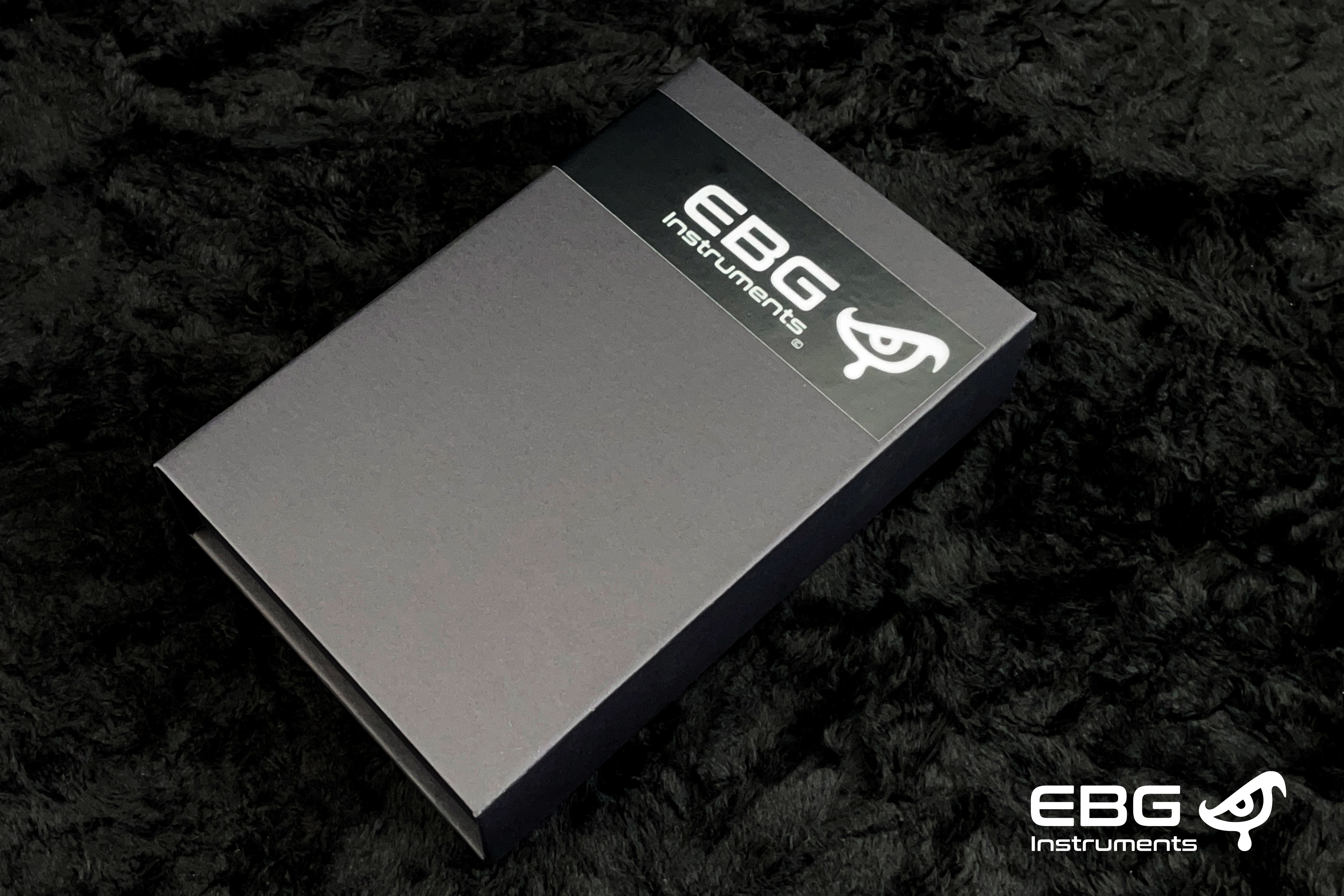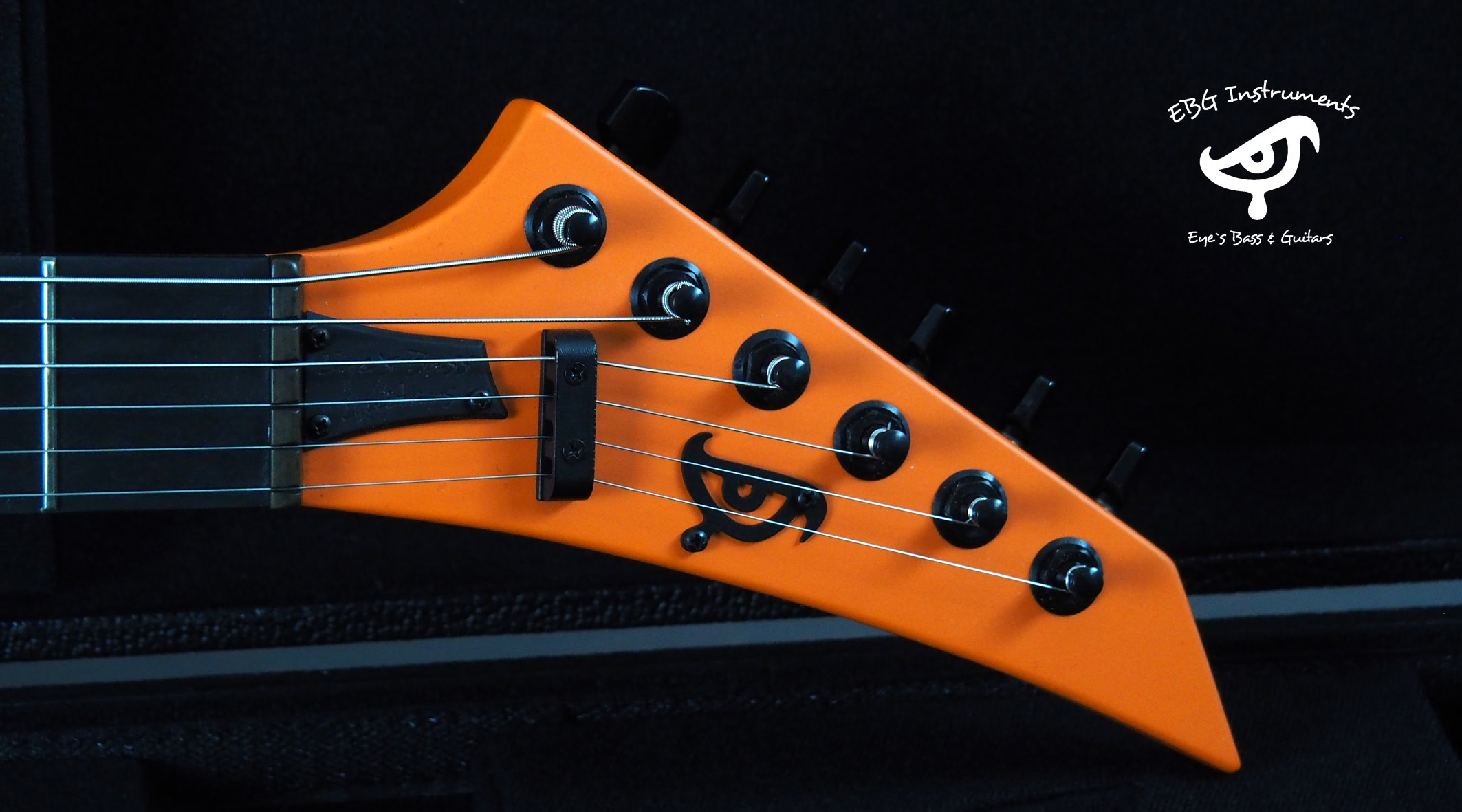Innovations
Every instrument built at EBG-Instruments is crafted with great diligence to the highest standards of precision. But we don’t stop there: We are constantly experimenting with new materials, parts, and manufacturing processes, making us a leader in the industry. Because we aren’t afraid of the new, our instruments push the envelope both in terms of handling, and sound.

Fatsus Bass Bridge
Discontent with the losses in sound transmission common in zinc alloy die-cast bass bridges, in 2020 we started using our own bass bridge at EBG-Instruments.
The specially designed 3D bass bridge combines full functionality made of solid and CNC milled bell brass with unique simplicity. Due to the massive bell brass and the precise CNC production, the sound is transmitted directly and clearly to the body without the losses that are common with zinc die-cast bridges.
This leads to a clear sound dynamic and a significantly better sustain of the instrument.
Due to the different depths of the recesses on the stainless steel Nuts, the bridge is adapted to a 12" fingerboard radius as standard. The fingerboard radius is compensated for by the different depths of the recesses on the string rest of the bridge. Thanks to the height adjustment and the rotating stainless steel Nuts, the bass bridge can of course also be used with other fingerboard radii.
The bridges are available for 4-string and 5-string basses and in black or nickel, each in silk gloss. If ordered individually, the bridges are delivered in an elegant magnetic folding box including screws and keys.
The bass bridge is 100% made in Germany.
Aluminum Center Block
Our signature aluminum center block, which is CNC milled from a solid block, enables us to build instruments that sound exactly like we want them to: with impressive sustain, clear and powerful sound, and a fast attack.
At first glance, aluminum in instrument construction is nothing new. It has been used mainly as a neck material by a few instrument makers in the past. The vibration behavior, the rigidity, the neutral and fast sound transmission are just a few of the many advantages of this material.
The relatively low density for metal also makes this material attractive, but of course, the non-ferrous metal aluminum, despite its low density of 2.7 kg/dm³, is significantly heavier than normal tonewood and often feels quite cool when playing the guitar. That is why EBG-Instruments deliberately refrains from using aluminum in the construction of its instrument necks and body wings. We only use it where the material increases the sustain and attack of the instrument and does not change the haptic or feel.
We managed to keep the overall weight of our instruments the same, even when adding the aluminum center block, as we milled out the body: because of the webs and walls, we can keep it very stable, free of distortion and light. Thanks to the wooden body wings, all of our instruments feel classic, familiar, and warm when they are played.
The aluminum alloy that EBG-Instruments uses is cold-rolled and not cast. In contrast to cast aluminum, this leads to a significantly more homogeneous density without air inclusions that would attenuate the sound signal and thus change it. These changes in tone and the loss of sustain due to air inclusions that we managed to avoid are known, for example, from guitar bridges or bass bridges made of die-cast zinc.
Through countless trials and tests, we have found a great aluminum alloy with many advantages. The aluminum center block forms the heart between the neck, Nut, strings, bridge, and body. This ensures a quick and neutral sound cycle when generating the tone.
Many customers ask us whether the wood or the type of wood on the body still plays a role. Of course, the wood or the type of wood still plays a role in our instruments. The aluminum on the center block behaves neutrally. It just swings very quickly. You can of course control the character of the instrument by choosing different body woods, neck woods, and fingerboards. We would be happy to advise you on the selection and your desired configuration.
Carbon Necks
EBG-Instruments has developed a hand-laminated carbon fiber neck: Carbon, with its networked, braided, and multi-layer construction, not only has a weight advantage when compared to wood but also forms an incredibly stiff and distortion-free component.
Wood has been successfully and sustainably produced and used in instrument making for centuries. The advantages of wood are obvious and do not have to be proven again. However, there are now just as suitable modern materials that are not necessarily fundamentally better, but do have their advantages in detail, and might therefore be used advantageously in instrument making.
Carbon, for example, is such a material. It sounds similar to wood, and its very special properties make it extremely interesting for instrument making.
Carbon has very high rigidity and can withstand very high mechanical loads. Due to its networked, braided, and multi-layer construction, it not only has a weight advantage with a very thin construction but also forms an incredibly stiff and distortion-free component. Especially with bass necks, the noticeably higher rigidity in contrast to wood is quite noticeable. In addition, carbon has an extremely low coefficient of thermal expansion and is less sensitive to weathering than wood.
EBG-Instruments has managed to use special fillers to make the carbon bass necks which aren’t any heavier than a wooden neck, but much more rigid and modern. For fine adjustment of the neck curvature, EBG-Instruments always uses a “double-action” truss rod in the carbon neck, despite the high rigidity. Thus, despite the high rigidity, it is always guaranteed that the desired neck curvature (even with different fingerboard materials) can be set and readjusted exactly according to customer requirements.
In addition, every EBG-Instruments carbon neck is made of real CFRP and is hand-laminated in multiple layers and created as a carbon fiber neck.
Carbon reinforcements in guitar and bass necks made of tonewood
To give necks made from tonewood higher strength and better tuning stability, EBG-Instruments adds carbon reinforcements.
Despite the most careful choice of tonewoods, it happens that the instrument neck is deformed disproportionately due to very high string tension.
Especially with long and thin necks, the curvature of the neck, particularly in the lower area, cannot always be corrected to a symmetrical bend with the truss rod. In the lower neck area, the neck foot is screwed to the body, and due to the long lever arm of the instrument neck, this is where the neck kinks the most due to the design. The string tension varies depending on the type of instrument, the number of strings, and the thickness of the strings between 45 and 120 kg.
That is why EBG-Instruments adds carbon reinforcements in the lower neck area of bass and guitar necks made from tonewoods. These not only increase the axial section modulus of the neck but also increase the neutrality against known external influences such as temperature and humidity. This also gives the instruments significantly better tuning stability.
Black Bone Nut
No, it doesn’t always have to be cream-colored
Our special process allows us to turn the normally cream-colored bones black. The bones retain their self-lubricating properties. That was very important to us. Depending on the design and color design, it can be more appropriate and beautiful if the bone appears in black. Especially with darker colors, the blackened bone looks really cool.






















